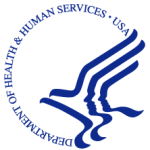- Industry: Government
- Number of terms: 33950
- Number of blossaries: 0
- Company Profile:
United States Department of Health and Human Services, Radiation Emergency Medical Management
Having to do with poison or something harmful to the body. Toxic substances usually cause unwanted side effects.
Industry:Health care
A group of disorders marked by problems in the normal functioning of the brain. These problems can produce seizures, unusual body movements, a loss of consciousness or changes in consciousness, as well as mental problems or problems with the senses.
Industry:Health care
The airway that leads from the larynx (voice box) to the bronchi (large airways that lead to the lungs). Also called windpipe.
Industry:Health care
Solid material that forms in the gallbladder or common bile duct. Gallstones are made of cholesterol or other substances found in the gallbladder. They may occur as one large stone or as many small ones, and vary from the size of a golf ball to a grain of sand. Also called cholelith.
Industry:Health care
An opening into the colon from the outside of the body. A colostomy provides a new path for waste material to leave the body after part of the colon has been removed.
Industry:Health care
A mineral needed for healthy teeth, bones, and other body tissues. It is the most common mineral in the body. A deposit of calcium in body tissues, such as breast tissue, may be a sign of disease.
Industry:Health care
A condition in which a patient is in a state of deep sleep and cannot be awakened. A coma may be caused by many things, including trauma, drugs, toxins, or certain diseases.
Industry:Health care
The longest part of the large intestine, which is a tube-like organ connected to the small intestine at one end and the anus at the other. The colon removes water and some nutrients and electrolytes from partially digested food. The remaining material, solid waste called stool, moves through the colon to the rectum and leaves the body through the anus.
Industry:Health care
